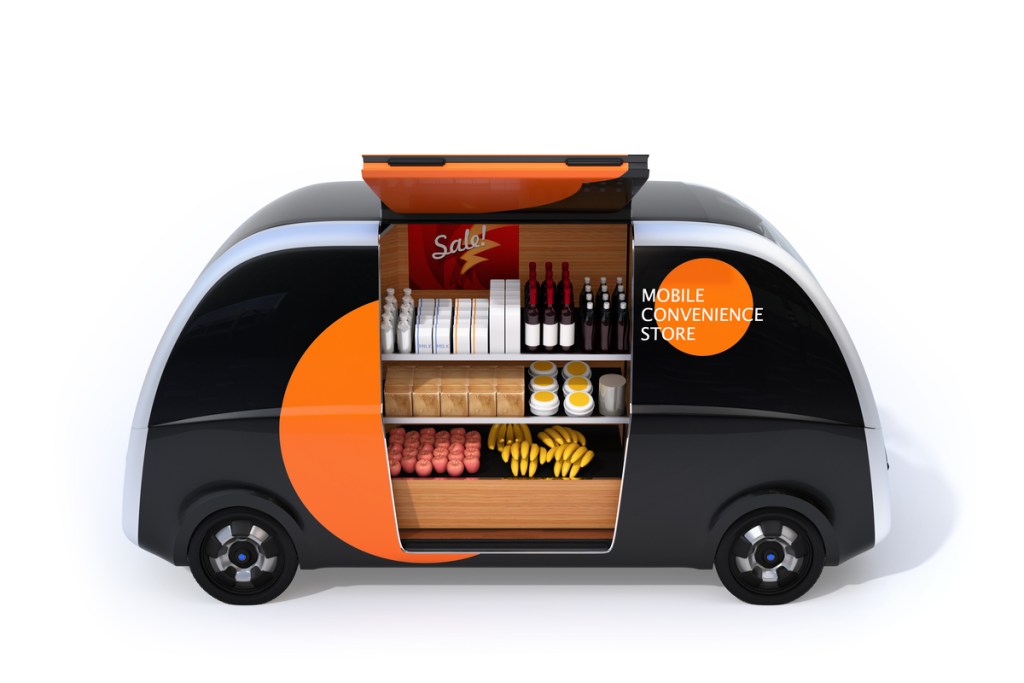Food delivery has been around for a long time. The first food delivered was in the late 1800s in Naples, Italy. You can probably guess what that food was. If you thought pizza, you’re right! Since then, everything from Chinese food to groceries gets delivered right to your doorstep.
Innovations are changing the way the food you order gets to you. Electric vehicle technology is making some waves in the food delivery business. There are many upsides to EV food delivery. However, there are also some downsides to switching over to an entire fleet of electric vehicle food delivery cars and trucks. We’ll examine some of the pros and cons, but first, let’s touch on some of the new developments in EV food delivery.

EV food delivery innovations
Many people don’t think about it, but golf carts were the first big success in electric vehicles. Now, many people are turning to similar types of EVs to deliver food. Smaller carts with hot and cold food storage are beginning to make their way into larger cities. These EVs can maneuver through busy sidewalks and fit into bike lanes.
One thing that rapidly accelerated EV food delivery innovation was the pandemic. With people staying in their homes, the demand for food delivery services skyrocketed. Also, businesses began to adapt their cafeterias to provide more open-air eating options for their employees. Mobile food stations, such as food trucks, also experienced higher demand.
Electric vehicle manufacturers began to expand into these areas of food delivery to help supply the demand. Manufacturers like Paxter and Ayro continue to deliver affordable EV solutions to help restaurants, hospitals, airports, universities, and others.
Benefits of food delivery with electric vehicles
Environmental benefits
When it comes to delivering food with EVs, there’s a long list of benefits. One that first comes to mind is the environmental benefit electric vehicles provide. Both business owners and their customers can feel good about this sustainable form of food delivery.
Increased profit margins
Another significant benefit for the businesses providing the food is the increased profit margins an EV can provide. The companies that saw the most considerable profits from the food delivery boom caused by the pandemic were third-party delivery companies like DoorDash and Uber Eats.
These companies charge massive fees to restaurants to use their services, making their already thin profit margins even thinner. Investing in an EV (or fleet of EVs) allows restaurants and other food providers to own the delivery process.
Mobile food service
Electric vehicles aren’t only helpful in delivering food; there are also electric mobile food service vehicle options. These compact, all-electric food trucks are great to have around for special events and holidays.
Marketing opportunities
Standing out is vital for any restaurant. EVs are noticeable, to begin with. Adding your business’s name and logo makes it even more prominent and lets everyone know your food is in high demand.

Downsides to EVs in food delivery
Upfront investment
If you’re considering purchasing an EV or two to make local food deliveries, you’re going to need to set some money aside for the investment. Although they’re not as costly as a new Tesla, or even a gas-powered car, a small EV delivery vehicle can range anywhere from $5,000 to $15,000, depending on the maker and features.
Timely to charge
Although EV batteries and their charging capabilities continue to get better, gasoline will always have the upper hand when it comes to time savings. If an employee forgets to put your delivery vehicle to charge overnight, you could find yourself in a bind the next day when delivery orders start to roll in.
Increased liability
In the past, if you hired a food delivery driver, they would use their vehicle. This meant they also would have to pay for their insurance and were liable for any unfortunate accidents. If you provide an electric car to make deliveries, you also must provide insurance, and your restaurant would be responsible for any accidental harm to an employee or others. Although you would have to provide this if you used a gas-powered car to make deliveries, the insurance premiums are an added cost.
The takeaway
Electric vehicles aren’t only changing the face of the automobile industry; they are also beginning to make an impact on food delivery services. EVs are beneficial in many ways. They’re better for the environment, they can increase profit margins, and they can be a great marketing tool. However, the upfront costs, charging time, and increased liability are some of the downsides to consider.



